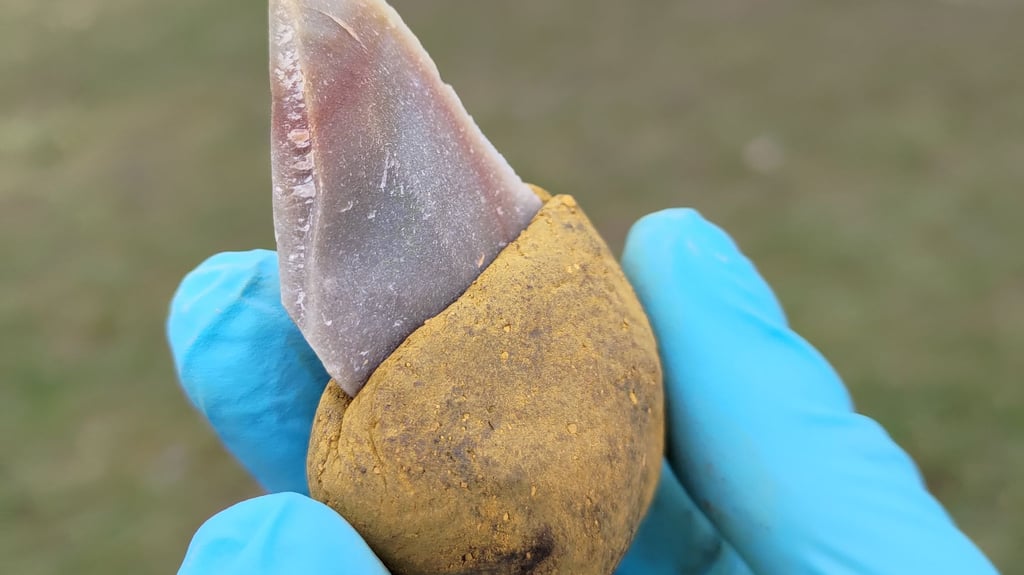Tübingen – Neanderthals may have used a complex, multi-component adhesive to bond stone tool handles more than 40,000 years ago. This was the result of the processing of objects from the Neanderthal site Le Moustier in Dordogne (France) under the supervision of Patrick Schmidt from the University of Tübingen and Ewa Dutkiewicz from the Museum of Prehistory and Early History at the Berlin State Museums. The study was published in the journal Science Advances.
This is said to be the first discovery of a multi-component adhesive in Europe to date. The use of such adhesives—including various sticky substances such as tree resins and ochre—was previously known primarily from early modern humans, Homo sapiens, in Africa. “Such technological advances and understanding of materials properties were also seen as the first expression of comprehensive human cognitive processes that are consistent with how we think about industrial processes today,” Schmidt said.
The researchers discovered remains of a mixture of ocher and bitumen on several stone tools, such as flakes, scrapers, and blades. Ocher is a naturally occurring, earthy colored pigment. The hydrocarbon mixture of bitumen is, among other things, a component of asphalt, and can be made from petroleum, but is also found naturally in the ground.
According to the study, in the Le Moustier region, ocher and bitumen had to be collected from distant places. This means a lot of effort and requires planning and a targeted approach, Dutkiewicz said. The elaborately produced adhesive was supposedly created by Neanderthals. “What our study shows is that similar patterns of thinking are reflected in early Homo sapiens in Africa and Neanderthals in Europe,” Schmidt says.

“Alcohol buff. Troublemaker. Introvert. Student. Social media lover. Web ninja. Bacon fan. Reader.”







More Stories
Consciousness in animals: and they still feel
Question for information – What is the impact of climate change on migratory birds?
How is it treated and how can it be prevented?